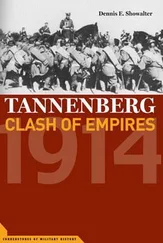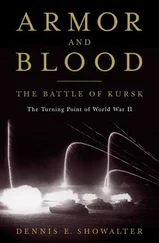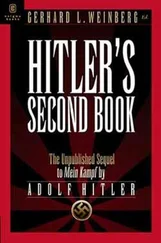In public Erich Ludendorff loftily declared that the German high command had decided not to fight a “war of material.” His memoirs are more self-critical: “Perhaps I should have put on more pressure: perhaps then we would have had a few more tanks for the decisive battles of 1918. But I don’t know what other necessary war material we should have had to cut short.” For any weapon, however, a doctrine is at least as important as numbers. In contrast to both the British and the French, the German army demonstrated neither institutional nor individual capacity for thinking about mechanized war beyond the most immediate, elementary contexts.
THE SAME POINT can be made about the Second Reich’s general approach to mobile warfare. The existence of a specific “German way of war” remains a subject for debate. Robert M. Citino, the concept’s foremost advocate, describes its genesis in a Prussian state located in the center of Europe, ringed by potential enemies, lacking both natural boundaries and natural resources. Unable to fight and win a long war, Prussia had to develop a way to fight front-loaded conflicts: short, intense, and ending with a battlefield victory leaving the enemy sufficiently weakened and intimidated to forgo a second round.
The Western world has developed three intellectual approaches to war. The first is the scientific approach. The scientists interpret war as subject to abstract laws and principles. Systematically studied and properly applied, these principles enable anticipating the consequences of decisions, behaviors, even attitudes. The Soviet Union offers the best example of a military system built around the scientific approach. Marxism-Leninism, the USSR’s legitimating ideology, was a science. The Soviet state and Soviet society was organized on scientific principles. War making was also a science. The application of its objective principles by trained and skilled engineers was the best predictor of victory.
The second approach to war is the managerial approach. Managers understand war in terms of organization and administration. Military effectiveness depends on the rational mobilization and application of human and material resources. Battle does not exactly take care of itself, but its uncertainties are best addressed in managerial contexts. The United States has been the most distinguished and successful exemplar of managerial war. In part, this reflects the country’s underlying pragmatism: an ethic of getting on with the job. It also reflects a historical geography that, since the Revolution, has impelled America to export its conflicts—in turn making administration a sine qua non. As demonstrated by the disasters suffered by Harmar and St. Clair in the 1790s to the catastrophe of Task Force Smith in 1950 Korea, without effective management, successful fighting has been impossible.
The Germans developed a third approach: understanding war as an art form. Though requiring basic craft skills, war defied reduction to rules and principles. Its mastery demanded study and reflection, but depended ultimately on two virtually untranslatable concepts: Fingerspitzengefühl and Tuchfühling. The closest English equivalent is the more sterile phrase: “Situational awareness.” The German concept incorporates as well the sense of panache: the difference, in horsemen’s language, between a hunter and a hack, or in contemporary terms, the difference between a family sedan and a muscle car.
Prussia’s situation did not merely generate but required the tactical orientation of its mentality. This is in direct contrast to the United States, whose fundamental military problems since at least the Mexican War have been on the level of strategy and grand strategy: where to go and how to sustain the effort. The actual fighting has been a secondary concern, which is why so many of America’s first battles have been disasters. Prussia, on the other hand, was unlikely to recover from an initial defeat. This was the lesson and the legacy of Frederick the Great. Its reverse side was the sterility of victories won in vacuums: by the end of the Seven Years’ War, Prussia was on the point of conquering itself to death.
As a consequence, Prussian theorists, commanders, and policy makers were constrained to develop a second, higher level of warmaking: the operational level. “Operational art” is usually defined in general terms as the handling of large forces in the context of a theater of war. The Germans incorporated a specific mentality emphasizing speed and daring: a war of movement. This involved maneuvering to strike as hard a blow as possible, from a direction as unexpected as possible. It depended on, and in turn fostered, particular institutional characteristics: a flexible command system, high levels of aggressiveness, an officer corps with a common perspective on war making. “We must strive,” wrote military theorist Friedrich von Bernhardi in 1912, “to gain a victory as rapidly as possible at the decisive spot by concentration… and then take advantage of it with the utmost energy…”
As Citino emphasizes, the German way of war had nothing to do with miles per hour—in principle. Practice was another story, especially over the course of the nineteenth century. As industrialization and bureaucratization enabled increasing armies’ size, as technology facilitated their concentration in the theater of war, the new German Empire kept pace. In 1914 its armies took the field without a hitch. At the other end of the military spectrum, Germany boasted Europe’s best-trained infantry and its most effective artillery. What it lacked was the mobility necessary to complete strategic movements like the great sweep through Belgium, and to develop the tactical victories won on the battlefield.
That limitation was more than a consequence of the dominance of firepower and the undeveloped use of internal- combustion engines. It involved a gap in the German way of war: neglect of operational mobility. Like its counterparts, nineteenth-century Prussian cavalry had been essentially a tactical instrument. In the Wars of Liberation, it had been deployed by regiments and brigades. In the Wars of Unification, 1866 and 1870, larger formations had been only organized on mobilization. Despite demonstrating all the disadvantages of improvisation, this remained unchanged in 1914.
The German cavalry division of 1914 was a potentially effective combined-arms team. Its six regiments, 4,500 troopers, had twelve field pieces and a half dozen mobile machine guns as organic fire support. They depended on horses but were by no means helpless on foot. Regiments were extensively trained in marksmanship and skirmishing. Officers did not ignore the potential of dismounted fire action. The division had its own bridging train, and even a radio detachment. Most divisions either had attached or could call on a battalion or two of Jäger. These elite light infantry formations included a cyclist company, a machine-gun company, and a small motor transport column whose ten trucks could be used to shuttle infantry forward, much like the truck companies attached to US infantry divisions in World War II.
Could firepower and mobility compensate for a lack of endurance? The question was never addressed. Alfred von Schlieffen, author of the great offensive plan implemented in 1914, had insisted on strong cavalry forces on the flanks. Instead, half the cavalry of Germany’s active army was directly assigned to infantry divisions. Of the ten cavalry divisions deployed on the Western Front in 1914, five were deployed to cover the advance in such unlikely cavalry country as the Vosges and the Ardennes. One need not assume that German cavalry that was utilized as an early version of the Soviet operational maneuver group would have somehow averted stagnation. The high force-to-space ratios of the Western Front, combined with the overwhelming superiority of firepower over mobility, and protection, would, in all probability, have ended in something approximating the race to the sea and the development of trench warfare no matter what the Kaiser’s horsemen did or did not do. What is significant is the cavalry’s acceptance of its limitations. Comprehensively rethinking the use of existing organizations to improve flexibility and maximize striking power proved to be beyond the collective imagination of the cavalry as well as the high command.
Читать дальше







![Traudl Junge - Hitler's Last Secretary - A Firsthand Account of Life with Hitler [aka Until the Final Hour]](/books/416681/traudl-junge-hitler-s-last-secretary-a-firsthand-thumb.webp)




